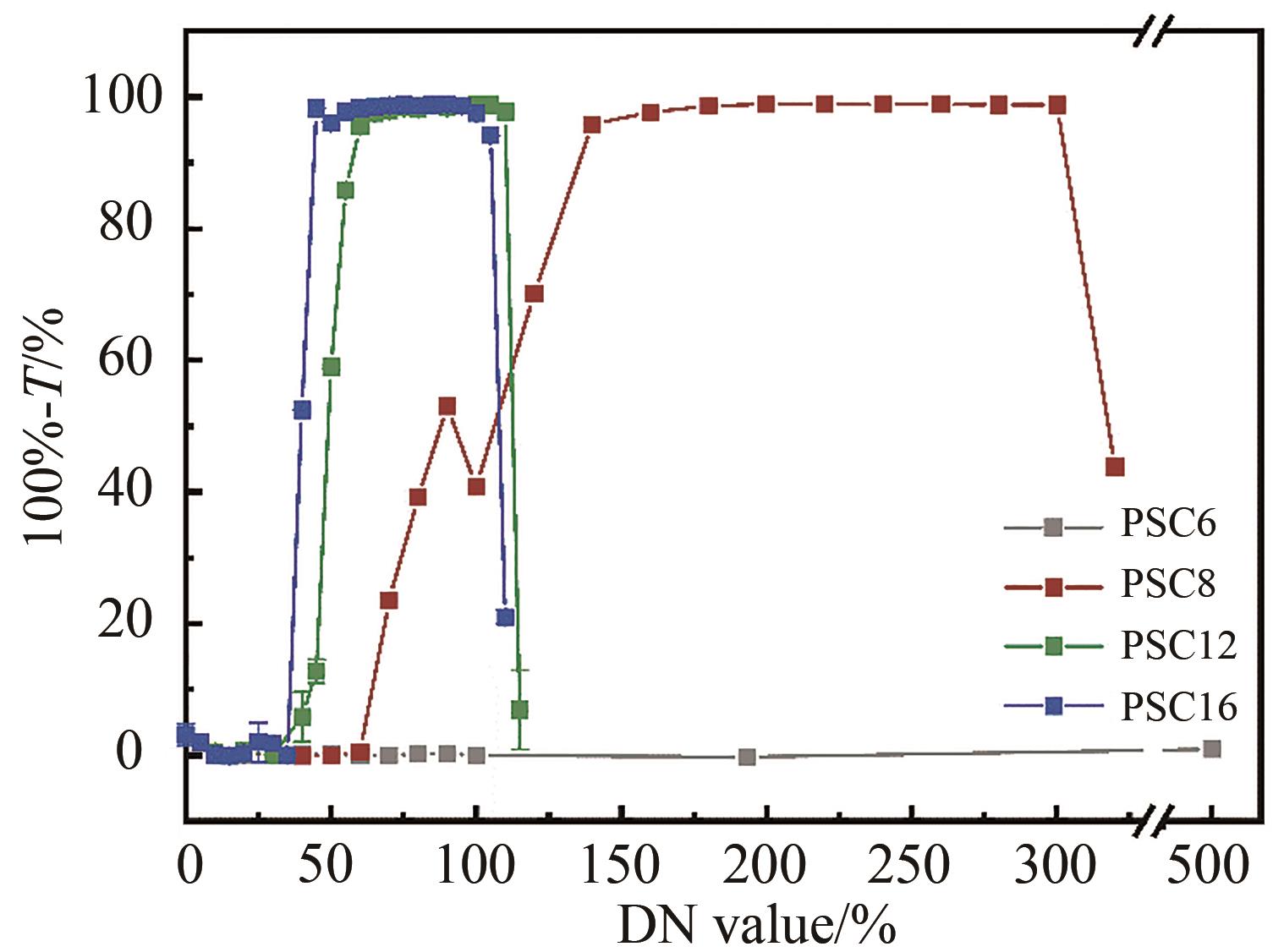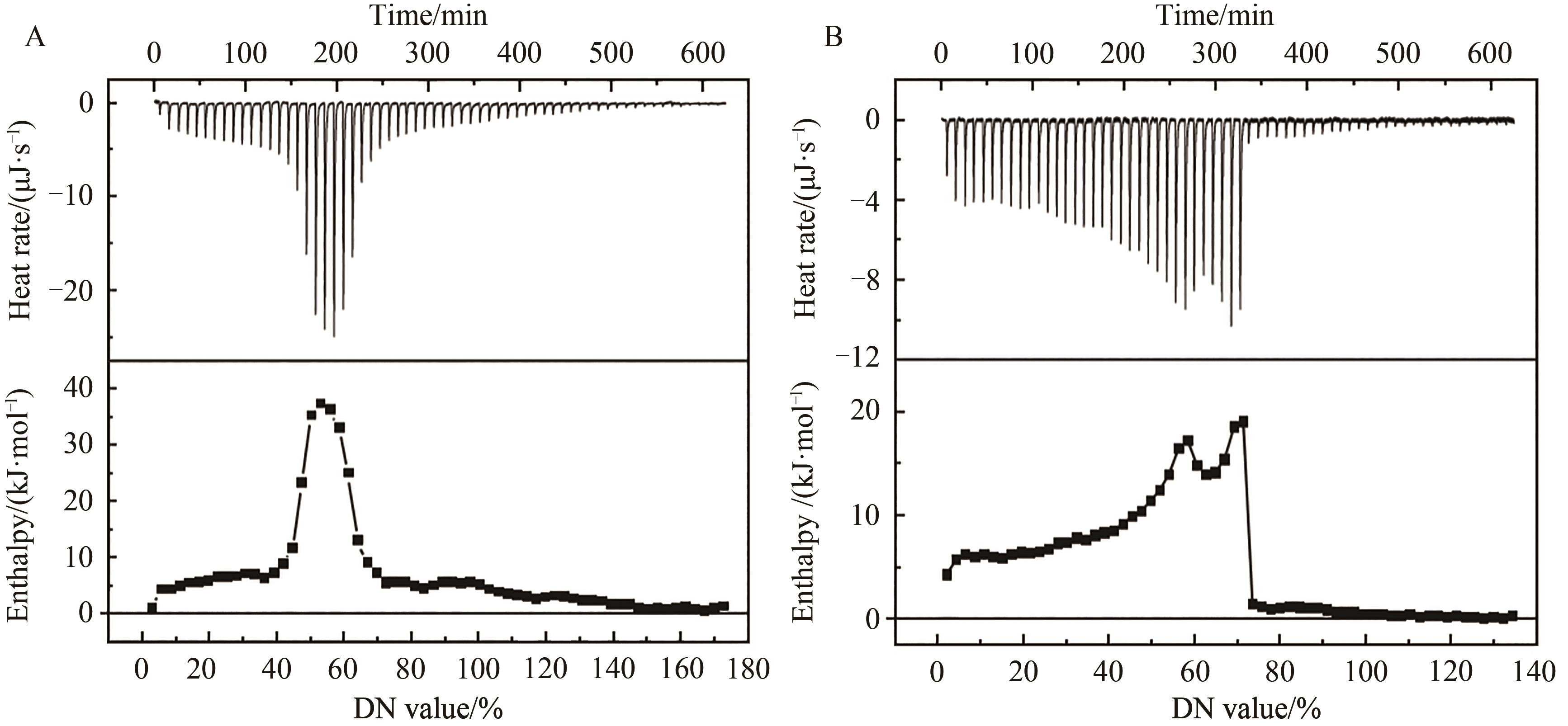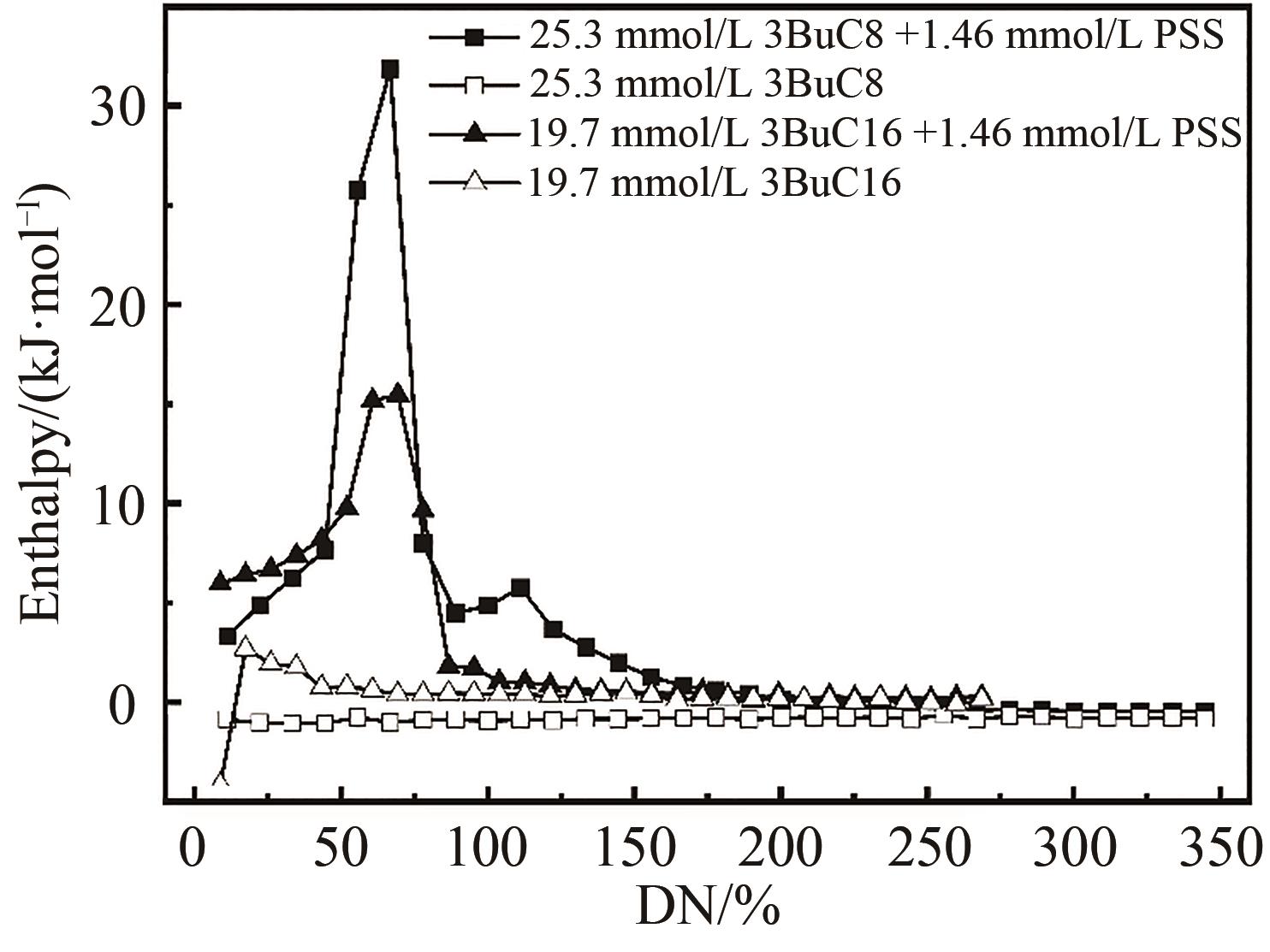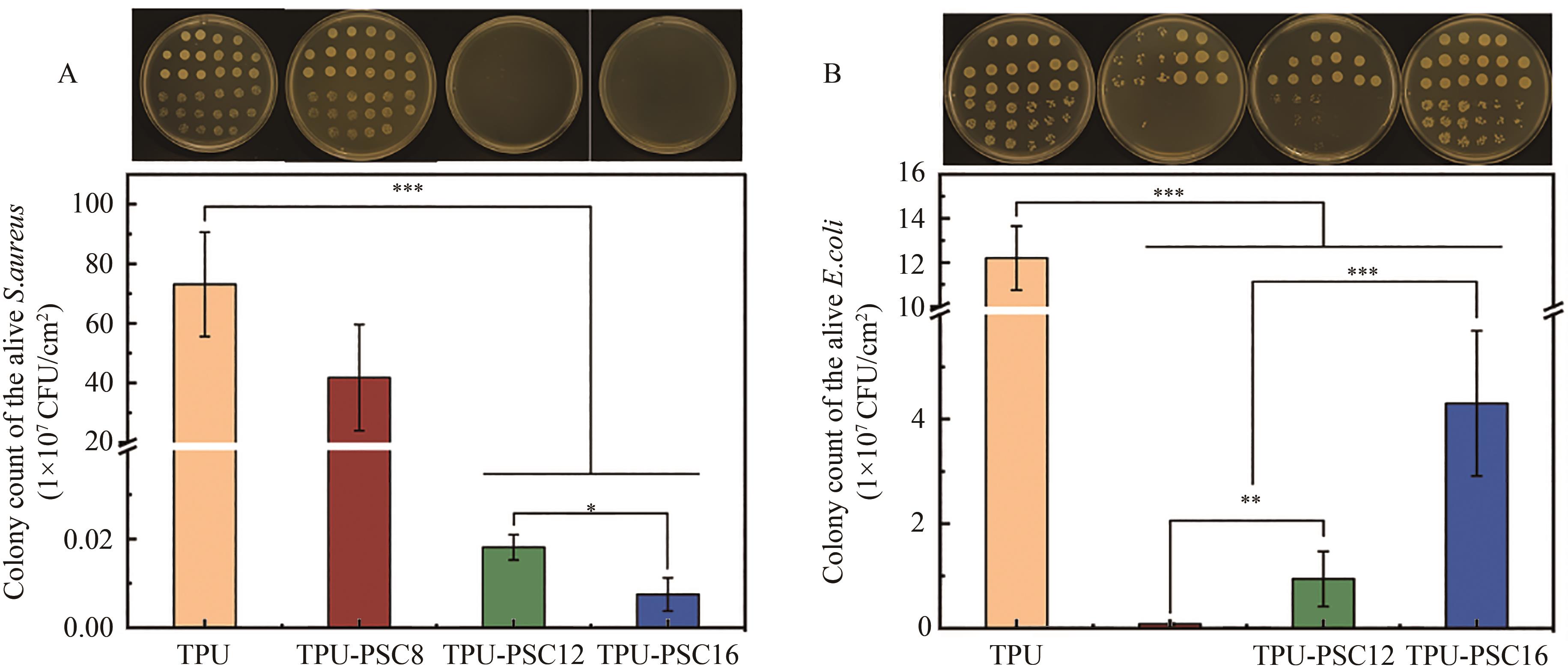
应用化学 ›› 2024, Vol. 41 ›› Issue (4): 521-528.DOI: 10.19894/j.issn.1000-0518.230341
聚苯乙烯磺酸钠与季鏻盐表面活性剂复合物的结构调控及其抗菌性能
刘博睿1,2, 牟倡骏3, 班雨1( ), 王磊1, 闫秋艳1, 石恒冲1,2(
), 王磊1, 闫秋艳1, 石恒冲1,2( ), 殷敬华1, 栾世方1,2
), 殷敬华1, 栾世方1,2
- 1.中国科学院长春应用化学研究所,高分子物理与化学国家重点实验室,长春 130022
2.中国科学技术大学应用化学与工程学院,合肥 230026
3.山东威高血液净化制品股份有限公司,威海 264200
Structural Regulation and Antibacterial Properties of Poly (Sodium-p-Styrene Sulfonate) and Quaternary Phosphonium Surfactanls Complexes
Bo-Rui LIU1,2, Chang-Jun MU3, Yu BAN1( ), Lei WANG1, Qiu-Yan YAN1, Heng-Chong SHI1,2(
), Lei WANG1, Qiu-Yan YAN1, Heng-Chong SHI1,2( ), Jing-Hua YIN1, Shi-Fang LUAN1,2
), Jing-Hua YIN1, Shi-Fang LUAN1,2
- 1.State Key Laboratory of Polymer Physics and Chemistry,Changchun Institute of Applied Chemistry,Chinese Academy of Sciences,Changchun 130022,China
2.School of Applied Chemistry and Engineering,University of Science and Technology of China,Hefei 230026,China
3.Shandong Weigao Blood Purification Products Co. ,Ltd. ,Weihai 264200,China
摘要:
发展非抗生素抗菌策略在减少医疗器械相关的细菌感染并降低对抗生素的过度依赖方面具有重大意义。 对医疗器械表面进行功能化,赋予其抗菌性能是非抗生素抗菌所采用的常用方式。 聚电解质-表面活性剂复合物的醇溶、水不溶的特点使其在构建抗菌涂层方面具有操作简单、不受器械结构限制的优点,有望应用于各种医疗器械的表面功能化。 本文通过构建不同烷基链长季鏻盐表面活性剂与聚苯乙烯磺酸钠聚阴离子复合物,系统研究了复合物在水溶液中的组装行为以及所制备复合物涂层的抗菌性能与表面活性剂组分疏水碳链长度之间的内在关联。 通过浊度、等温滴定量热法等测试手段对聚苯乙烯磺酸钠与3种三丁基烷基季鏻盐表面活性剂在水中的组装过程进行了分析,结果表明增加表面活性剂烷基链长将促进聚电解质-表面活性剂复合物形成。 通过在常用医疗器械材料表面构建复合物涂层,对比了3种复合物对两种模型菌种的抗菌性能。 对于以金黄色葡萄球菌为代表的革兰氏阳性菌,所制备的3种复合物涂层的杀菌率分别为42.9%、99.97%和99.99%,随着表面活性剂烷基链越长而提高; 对于大肠杆菌为代表的革兰氏阴性菌,随着表面活性剂烷基链长度增加,单独季鏻盐表面活性剂的抗菌性能增强,而其对应复合物涂层的抗菌性能有所下降,杀菌率分别为99.3%、92.3%和64.8%。 以上结果表明,通过优化结构,此类聚电解质-表面活性剂复合物涂层有望用于减少医疗器械相关感染。
中图分类号:




